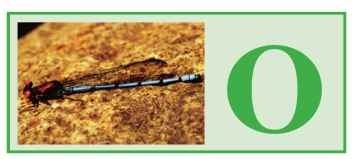The number, size, and arrangement of ocelli, or simple eyes,are important diagnostic characters for many larvae. Until relatively recently, the simple eyes of both larvae and adults have been termed “ocelli” (ocellus), although it has been recognized that these are two different groups that are innervated from different parts of the brain.
OCELLI
One group of simple eyes, found in adult insects and larvae of nonholometabolans, is termed “dorsal ocelli” or simply “ocelli.” These structures are innervated dorsally from the protocerebrum between the optic lobes. There are basically four dorsal ocelli, but one pair is fused to form the median ocellus; thus, there are typically three ocelli located near the midline of the head, but the number varies from zero to three (eight in Collembola). Their function is apparently visual, but knowledge is sparse about precisely what they see and how they interact with the compound eyes.
STEMMATA
The second group of simple eyes, formerly termed “lateral ocelli” but now termed “stemmata” (singular stemma), is found in the larvae of Holometabola. Stemmata are innervated laterally from the optic lobes, and typically there is a group on each side of the head. The number of stemmata is variable, ranging from zero to seven, and the number and arrangement can be diagnostic. They are most highly developed in externally feeding larvae such as caterpillars, sawfly larvae, and predaceous larvae, and are frequently less well developed, fewer in number, or absent in larvae found in concealed situations. Stemmata are used as horizon detectors, but the sharpness of their perception is no doubt limited.

